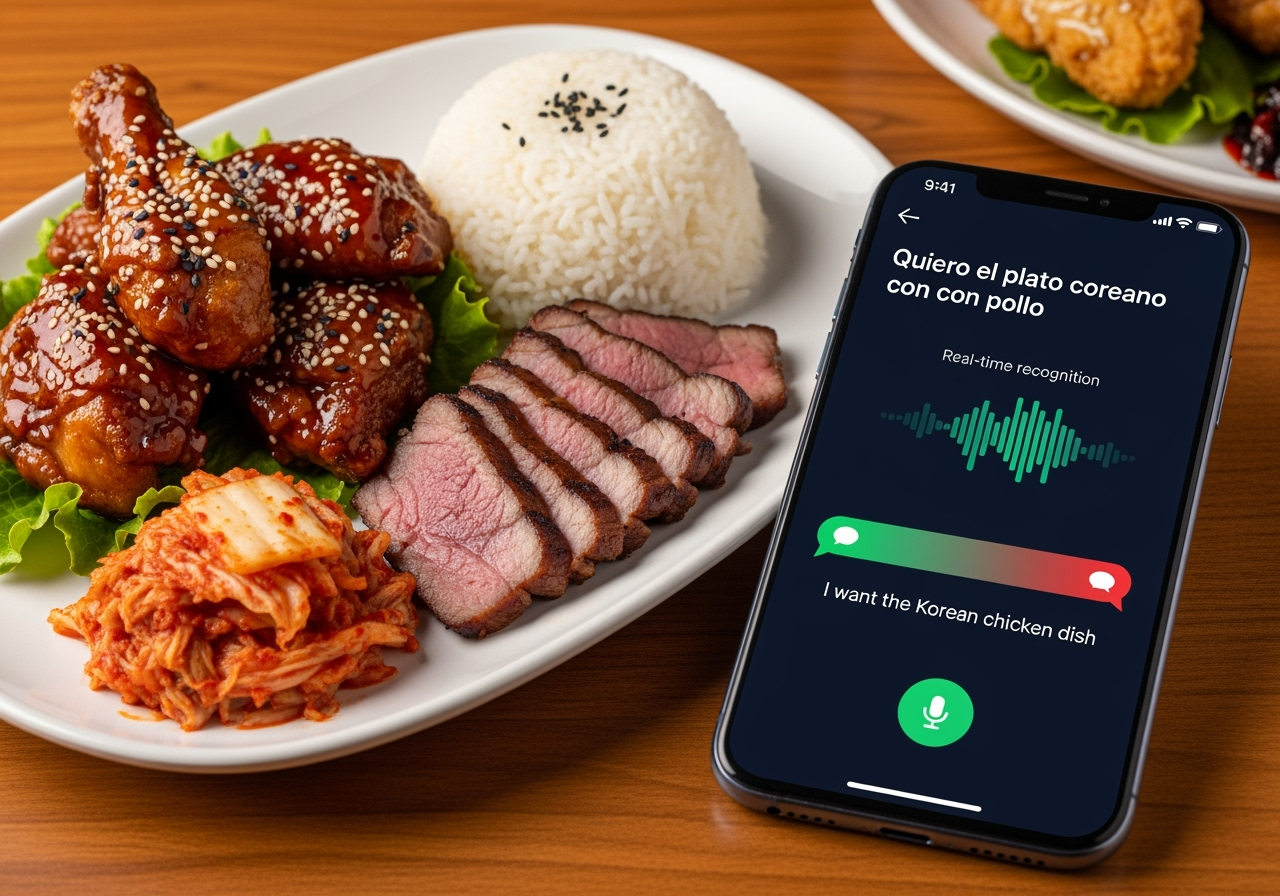
Voice AI-Powered Global Dining: Breaking Language Barriers
The culinary world is experiencing a seismic shift. Traditional boundaries between cuisines are dissolving faster than ever, creating what industry experts call "borderless cuisine" - a revolutionary movement where Korean tacos meet Italian risotto, and Thai-inspired pizza becomes the norm.
But here's the challenge: when your menu features Korean-Mexican fusion or Japanese-Italian crossovers, how do customers even begin to order these complex creations?
More importantly, how do restaurants handle orders in multiple languages for dishes that don't exist in traditional culinary dictionaries?
The Global Fusion Explosion
Walk into any trendy restaurant today and you'll find menus that read like a United Nations summit. Chefs are blending techniques from their cultural heritage with local ingredients, creating dishes that tell stories across continents. This isn't just about adding sriracha to everything - it's about genuine culinary innovation that respects traditions while pushing boundaries.
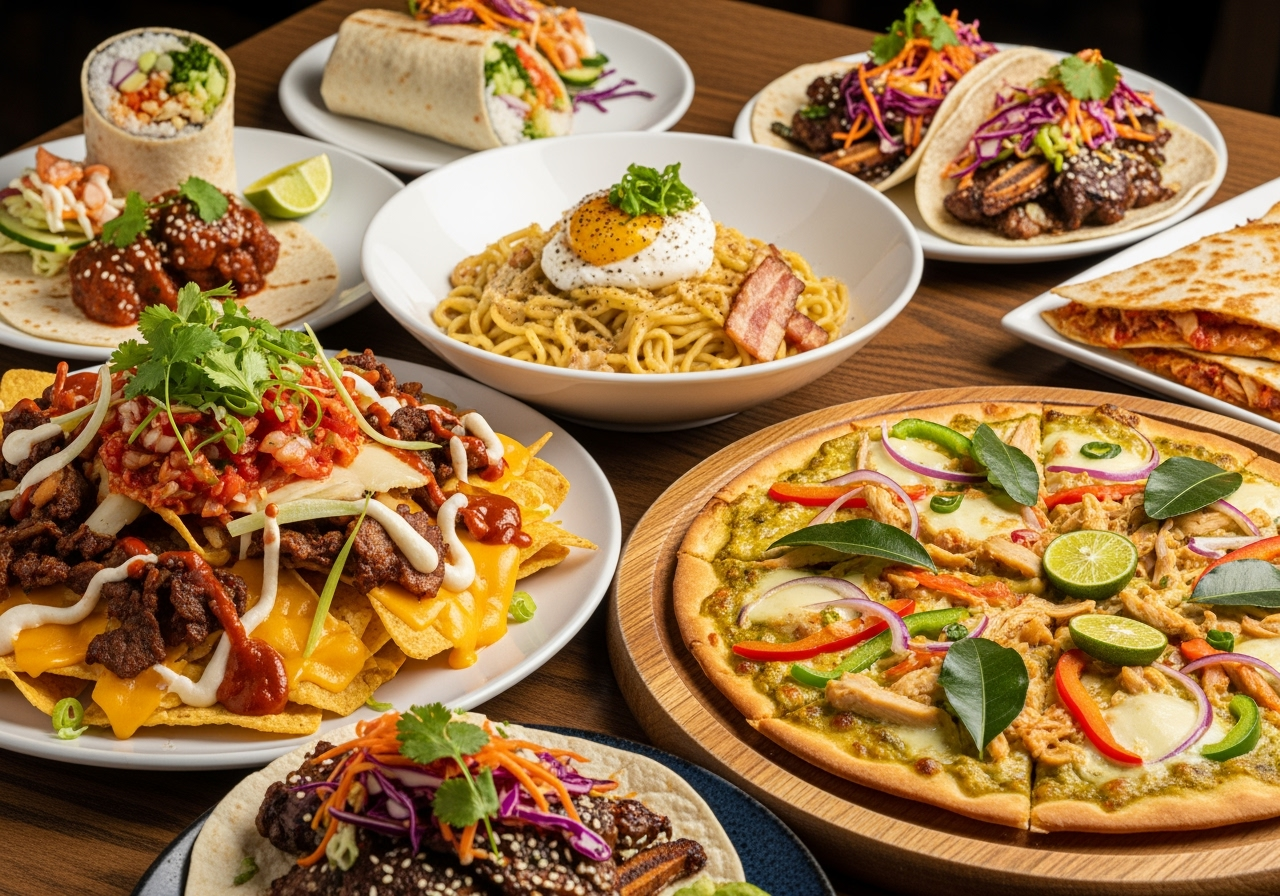
The challenge?
These fusion creations often don't have direct translations. How do you explain "Korean bulgogi nachos with kimchi salsa" to a Spanish-speaking customer? Or help an Italian grandmother order "ramen carbonara" when the concept exists in neither culture traditionally?
Where Traditional Ordering Falls Short
Restaurant staff face an impossible task. They need to be cultural translators, food educators, and order-takers simultaneously.
Consider these real scenarios:
Traditional phone ordering becomes a linguistic nightmare. Staff members struggle to bridge language gaps while explaining complex fusion concepts, leading to frustrated customers and incorrect orders.
The AI Language Revolution
This is where intelligent voice technology transforms the entire experience. Modern AI systems don't just translate words - they understand culinary contexts across cultures.
When a customer calls and says "quiero el plato coreano con pollo" (I want the Korean dish with chicken), advanced voice AI can instantly identify they're likely referring to Korean-style chicken dishes on your fusion menu.
The system understands both the Spanish request and the Korean culinary reference, creating seamless communication.
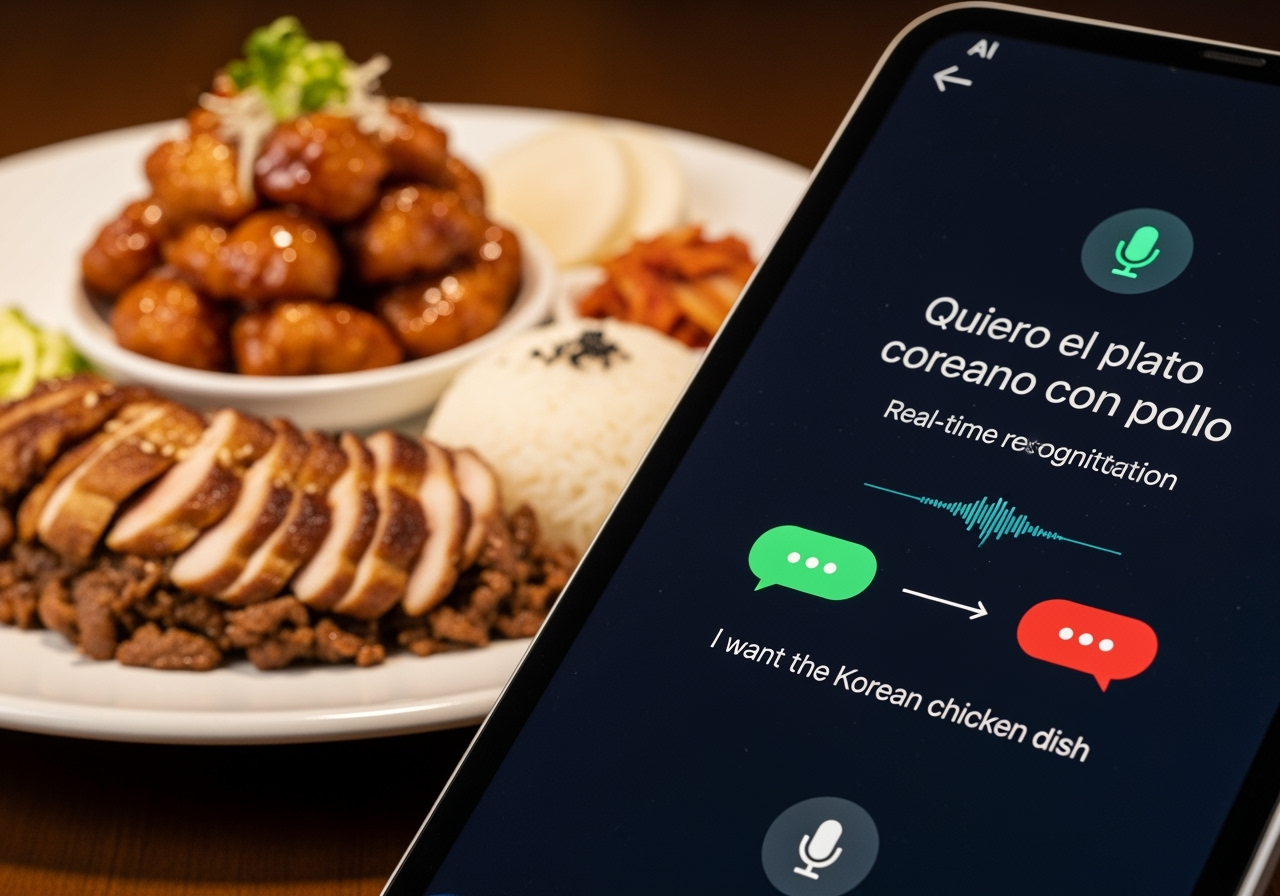
But it goes deeper than basic translation. AI learns the nuanced ways different cultures describe food. Italian speakers might describe texture differently from Japanese speakers. Mexican customers might reference spice levels using completely different scales than Indian customers.
Beyond Translation: Cultural Food Intelligence
The real breakthrough isn't just language processing - it's cultural food intelligence. AI systems learn how different cultures approach ordering, dietary restrictions, and flavor preferences.
For example:
This cultural intelligence prevents the awkward miscommunications that plague traditional ordering systems.
Real-World Fusion Ordering Scenarios
Picture these seamless interactions:
A customer calls speaking Portuguese, describing a craving for "something like feijoada but with Asian flavors." The AI instantly understands they want Brazilian-Asian fusion, suggests your Korean-Brazilian bowl, and explains the ingredients in perfect Portuguese.
Or imagine a family where grandparents speak only Cantonese, parents speak English, and teenagers text in Spanish slang. Everyone can interact with the ordering system in their preferred language, yet the kitchen receives one perfectly coordinated order.
The Technology Behind Seamless Fusion Ordering
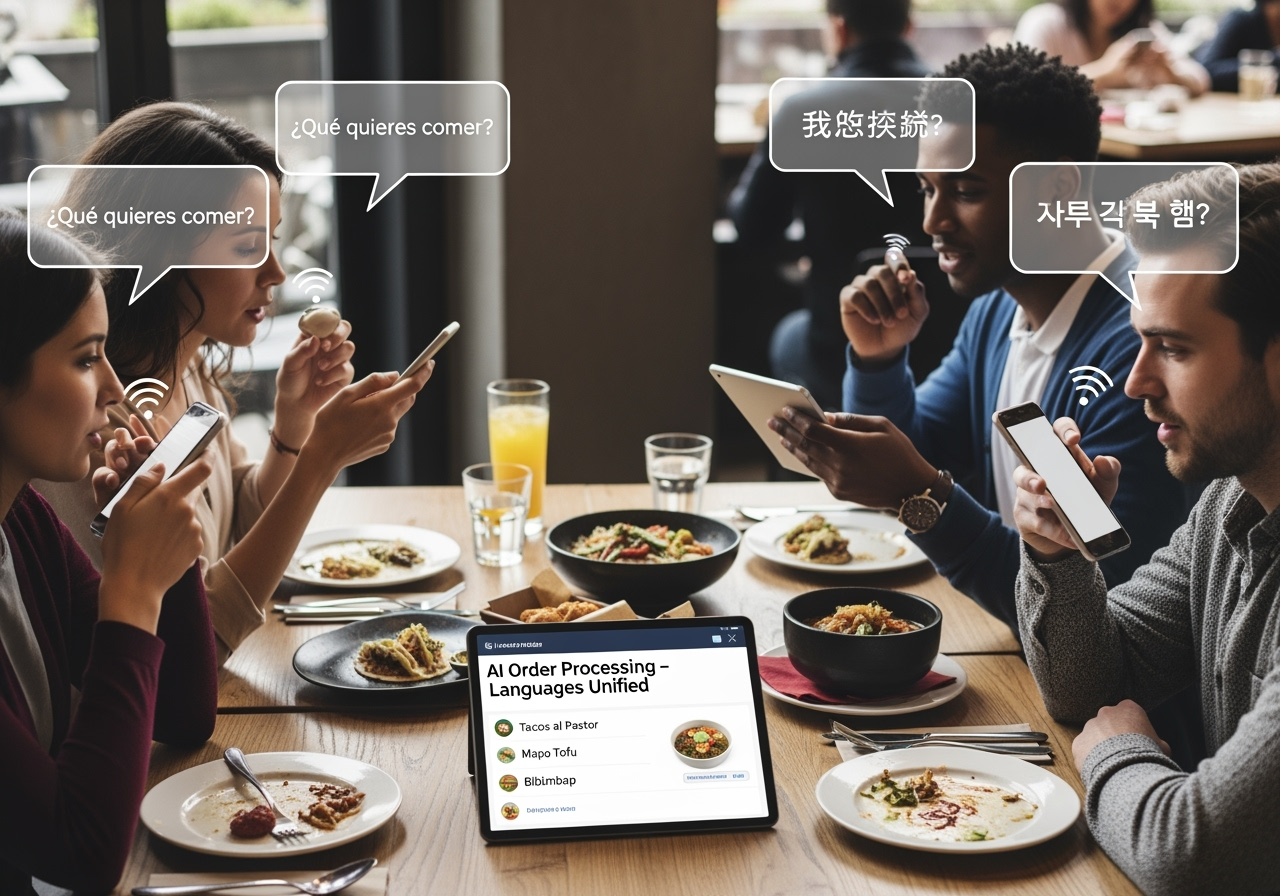
Modern voice AI doesn't just recognize words - it understands food culture. The system learns from thousands of fusion ordering interactions, building intelligence about how different cultures describe unfamiliar dishes.
Key capabilities include:
Breaking Down Menu Barriers
Traditional menus become obsolete when AI can explain any dish in any language. Customers don't need to decipher "Korean-Italian bulgogi risotto" - they can simply describe what they're craving, and the AI guides them to the perfect fusion creation.
This democratizes fusion cuisine. No longer do language barriers prevent customers from exploring innovative dishes. Every customer, regardless of their linguistic background, can access the full creative range of borderless cuisine.
The Future of Multicultural Dining
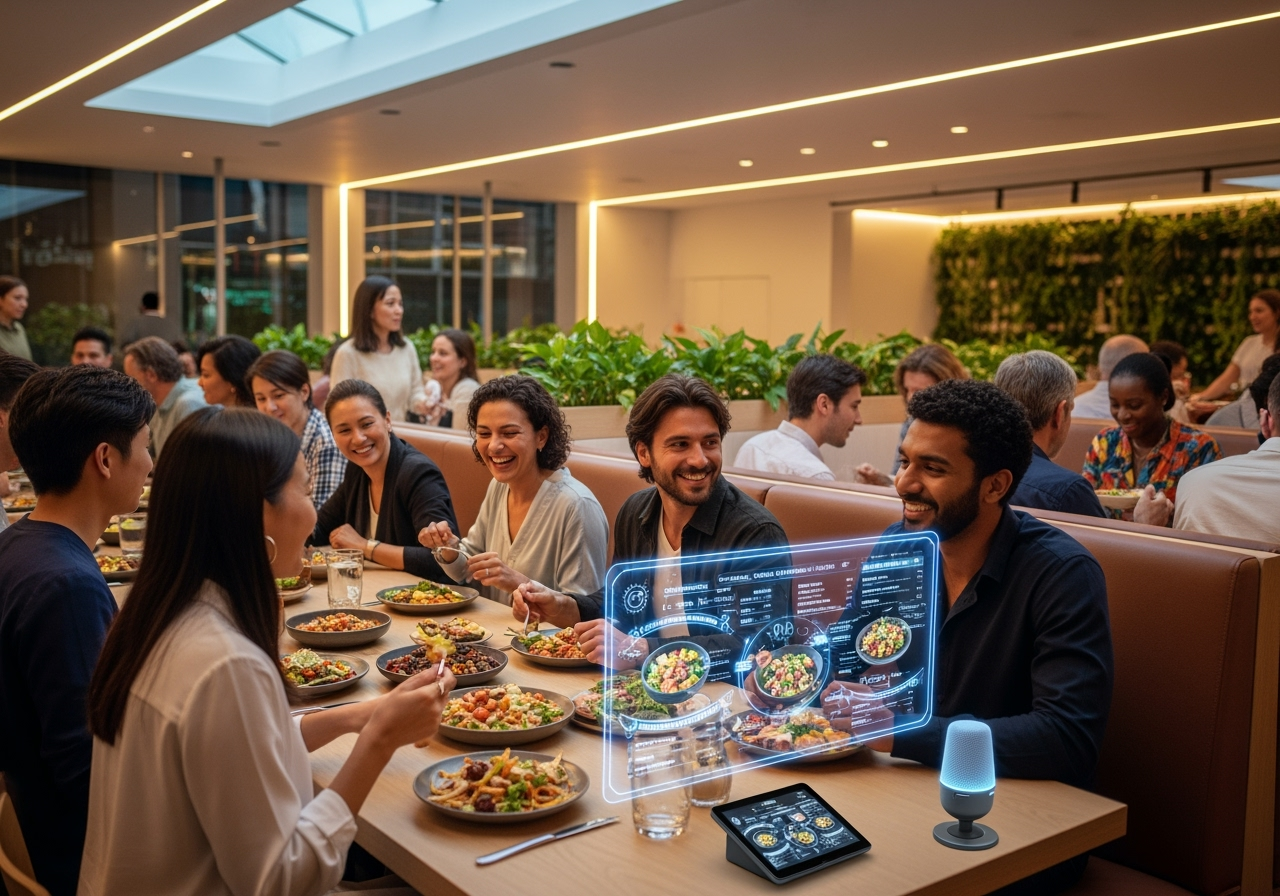
As fusion cuisine continues evolving, AI ordering systems evolve alongside it. They learn new fusion combinations, understand emerging food trends across cultures, and help restaurants serve increasingly diverse communities.
The technology enables restaurants to be truly inclusive. Every customer feels welcomed, understood, and excited to explore fusion creations - regardless of the languages they speak or the cultural food contexts they bring.
Embracing the Borderless Future
The borderless cuisine revolution isn't slowing down. Chefs continue pushing creative boundaries, blending traditions in ways that surprise and delight. But the real revolution happens when every customer can participate in this culinary adventure, speaking their language while exploring flavors from around the world.
Smart restaurants are already embracing this future. They're using AI technology to break down the final barrier between innovative fusion cuisine and diverse customer communities.
The result?
A dining experience where language enhances rather than limits culinary exploration.
Ready to join the borderless cuisine revolution? Discover how Takeorder AI transforms multilingual ordering into seamless culinary adventures. Visit our solutions page to learn more about breaking language barriers in your restaurant.
Stay updated on our news and events! Sign up to receive our newsletter.
Thank you for signing up!
Something went wrong. Please try again later.